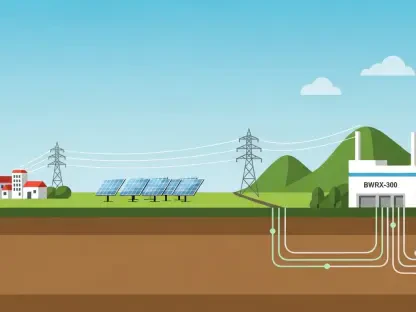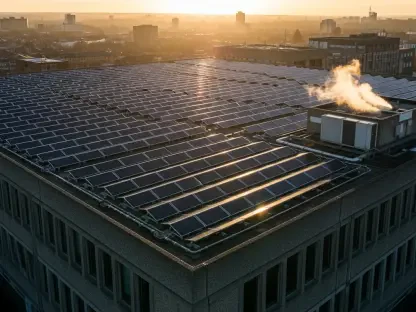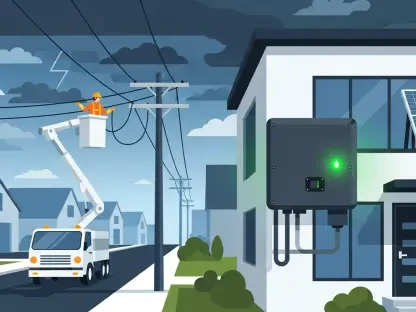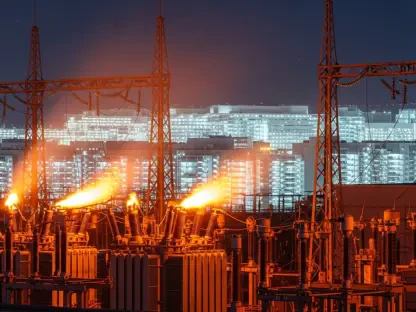The political landscape of energy policies within the United States faces potential turbulence with former President Donald Trump’s proposal to cut $19.3 billion from the Department of Energy’s fiscal budget in 2026. Focusing heavily on clean energy and climate initiatives, these proposed budget reductions become central to discussions on whether the shift will benefit or hinder long-term energy market dynamics.
Context and Significance of the Proposal
Amid an era where clean energy innovation has increasingly directed funds toward revamping infrastructure, Trump’s budget proposal challenges these advancements by slashing allocations planned under the Infrastructure Investment and Jobs Act (IIJA) and the Office of Energy Efficiency and Renewable Energy (EERE). The significance lies not only in fiscal conservatism but also in how the choice reflects broader ideological differences regarding government roles within energy sectors. This analysis aims to dissect these changes’ potential impacts on market functionalities and the direction of U.S. energy policies.
Unpacking Market Implications and Dynamics
Diverging Opinions and Energy Sector Responses
The proposed cuts spark polarized reactions across sectors and communities. Critics fear that truncating IIJA funding by $15.2 billion could derail progress on renewable energy infrastructure projects, potentially stymying innovations crucial for reducing carbon emissions. Supporters from traditional energy fields argue that it will lead to a leaner, more efficient policy focused on sustainable growth rather than unreliable technologies. Assessing market dynamics, it is crucial to recognize how these divergent opinions shape decisions for stakeholders aiming to adapt within evolving frameworks.
Redefining Research Priorities and Funding Allocation
Further emphasizing the fiscal realignment, Trump’s proposal advocates a $2.6 billion reduction in funding aimed at EERE, which signals an ideological preference for early-stage research over immediate deployment of clean technologies. This shift toward bioenergy and firm baseload power sources presents broader implications for renewable investments, including potential setbacks within emerging sectors like battery manufacturing. Markets may face resulting shifts in resource allocations as traditional energy firms possibly gain momentum.
Regional Variations and Sectoral Dependencies
Localized impacts from proposed budget cuts reveal inconsistencies across geographies and sectors. Regions heavily reliant on renewable energy might face economic challenges, while others favoring conventional energy strategies could see growth opportunities. Exploring these regional variations highlights the interdependent nature of energy markets, stressing the need for flexibility amidst evolving policies. Analysts must consider these complexities as shifts redefine local and national energy landscapes.
Reflecting on Findings and Strategic Considerations
The underlying examination of Trump’s fiscal proposal uncovers pivotal forces within current energy policies that may alter investments and innovations by reallocating funding priorities. Considerations for businesses include adapting to limited government support for renewables while evaluating opportunities within traditional energy sectors. Looking forward, understanding the market’s capacity to thrive under changing paradigms offers valuable insights into managing government intervention in energy development.
The conclusive exploration into the proposed budget changes illuminates broader challenges and opportunities across U.S. energy policy. Although critics warn of increased household electricity costs without the Low Income Home Energy Assistance Program, the policy shift presents potential advantages in areas like national nuclear security. Stakeholders and policymakers must identify strategic solutions, ensuring adaptability within fluctuating energy markets, while innovative approaches to energy sourcing pave future progress.
Recognizing the transformative nature of such fiscal strategies is essential for anticipating and navigating potential shifts in energy policy. As the political landscape evolves, stakeholders must continually assess the broader economic and technological implications to strategically balance investment priorities within dynamically changing markets.









